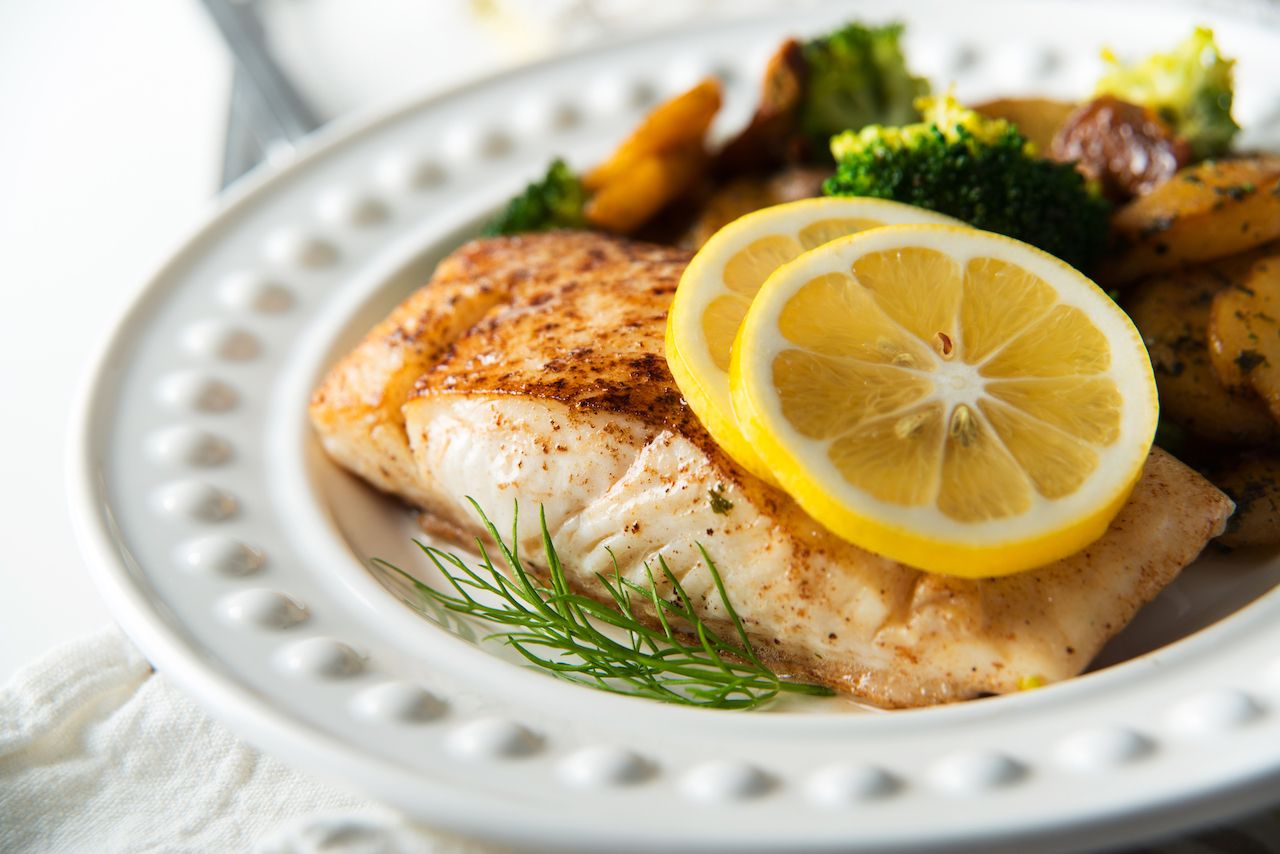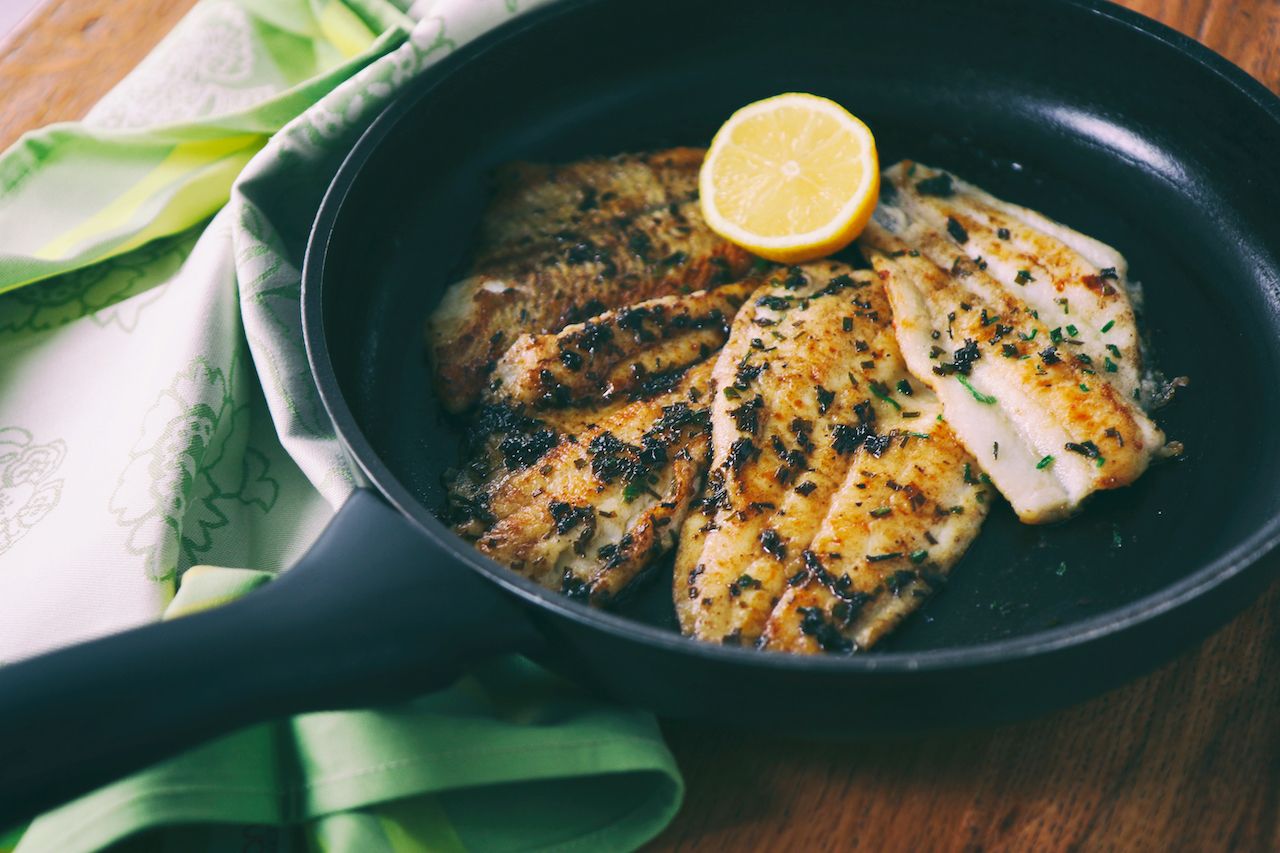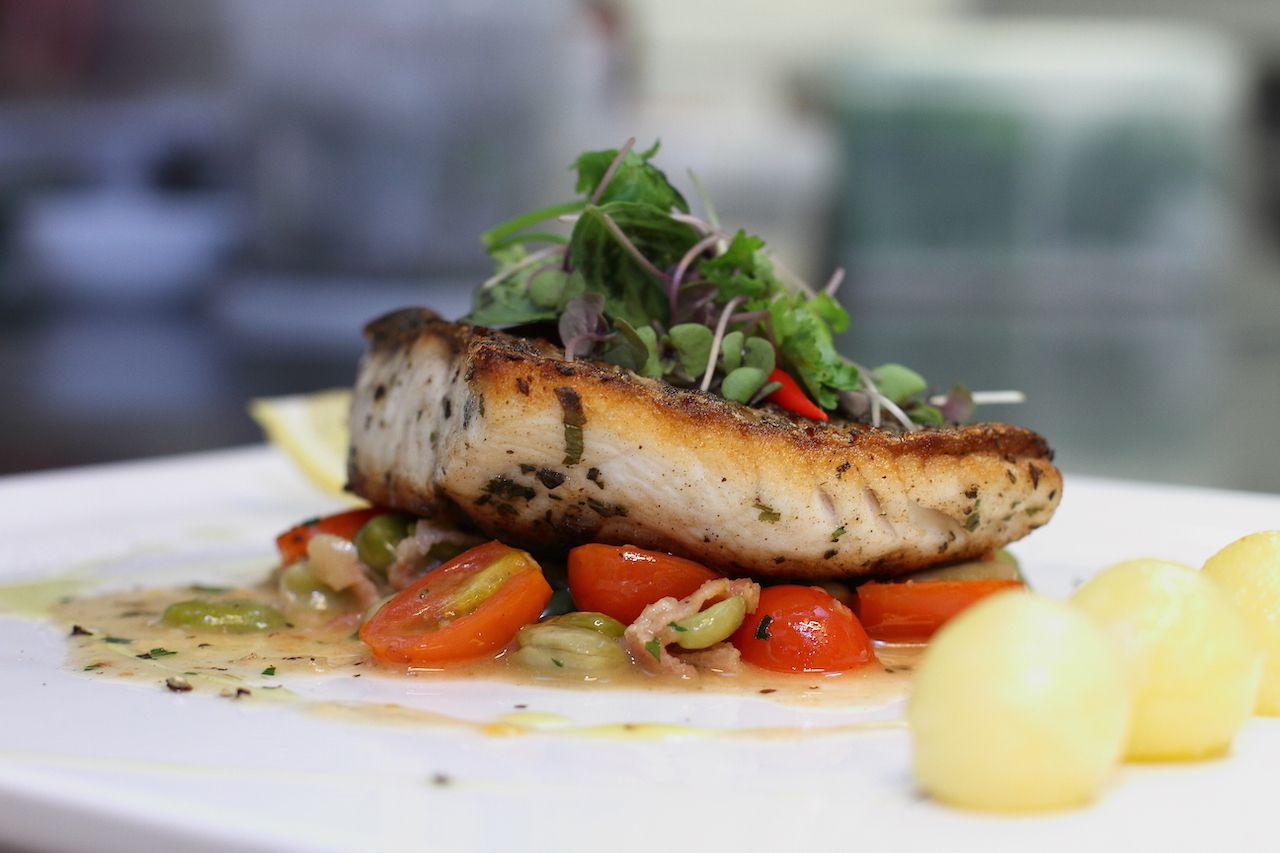White fish: It sounds boring. Bland. It’s the overlooked cousin of rich tuna and oily salmon. It’s true that the flavor of white fish — Atlantic cod, haddock, hake, halibut, flounder, and sole to name a few — is mild, the flesh colorless and dry. No matter where you travel, you’re likely to encounter white fish on the menu (whether or not the type of white fish is listed is another matter). Case in point: It’s the basis for the beloved fish and chips.
White fish come in two varieties. There are round ones, like cod and sea bass, which look like your garden variety fish, and flat, which has a much stranger look. Flat fish, like halibut, flounder, and sole, are what they sound like: a flat-shaped fish with eyes on one side of the head that swim sideways and hunt on the ocean floor, usually by hiding in the sand. Though flat fish aren’t exactly glamorous creatures, they are longtime inhabitants of both the restaurant and the home kitchen.
These are the five most popular white fish you’ll see when traveling and wandering the grocery store aisles.





